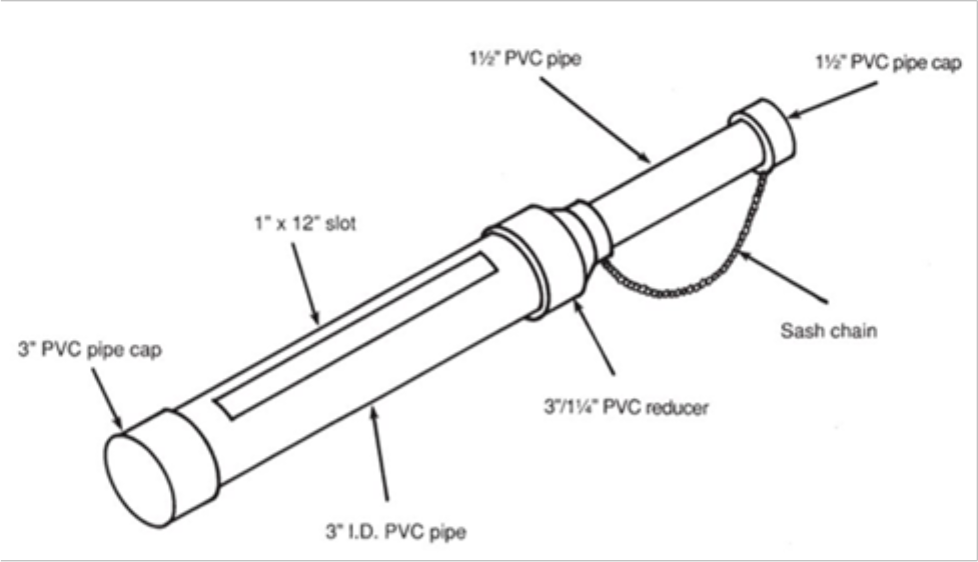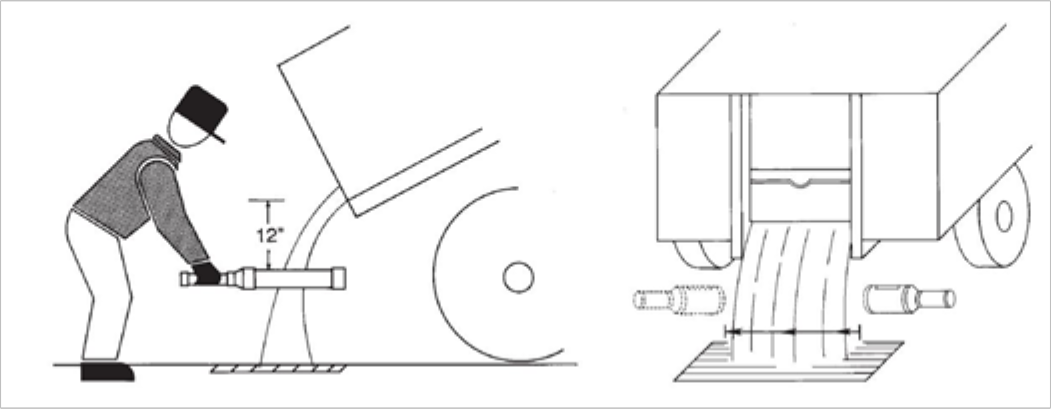⇦ Back to Livestock and Feedstuff Management Home
¶ Introduction
Laboratory testing can identify the nutritional differences between different feeds and different feed sources. This information is essential to balance rations properly. Feed samples must accurately represent the feedstuff in question for accurate results. Sampling feeds properly reduces the potential variability within the sample and improves the accuracy of the analytical results.
¶ Bulk Grain or Dry Feed (in storage)
Use a grain trier or probe long enough to penetrate at least three-fourths of the depth of the grain or feed being sampled.
Sample 5 to 6 locations at one-fourth, one-half, and threefourths of the depth of the bin. Observe confined space safety precautions when appropriate.
Avoid sampling the upper surface or outside edges of the grain mass because exposure to temperature changes may have caused deterioration.
Mix samples and reduce final sample size to about one pound or about one quart. Avoid segregation of different sized particles during mixing.
A riffle splitter or Boerner divider should be used (if available) to reduce the bulk sample size. The bulk sample can also be reduced by using the “quartering” procedure if a commercial divider is not available. (See Crop File 6.01.001, “Feed and Forage Sampling – General Guidelines” for details.)
¶ Figure 1. Construction Details of Pipe Sampler for Grains and Dry Feeds

www.ag.ndsu.edu/pubs/plantsci/smgrains/ae1044.pdf
¶ Bulk Grain or Dry Feed (during transfer)
Representative samples can be collected from the grain stream that falls from a truck or wagon end-gate or from an auger discharge. Proper sampling procedures require using an appropriate sampling device.
Hand-grab samples or samples collected with a scoop or bucket often do not represent the bulk sample. There are commercial devices (e.g., stream splitter) used for collecting samples, but may not be readily available.
Figure 1 illustrates an inexpensive, stream sampler called the “pipe sampler”. The sampler is built of PVC pipe and can be made using ordinary hand and power tools[1].
Take at least two (preferably more) samples at random intervals so the entire lot of grain is represented. Samples should not be taken from the first or the last portions of a load since these areas may not represent the load.
Samples should be collected from the grain stream where the stream is established about 12 inches below the end-gate or discharge (see Figure 2).
Hold the sampler in a horizontal position while passing it through the grain stream with a side-to-side sweeping motion to facilitate even filling of the sampler from front to back.
The sample sweeps should be combined and mixed thoroughly to form the composite bulk sample.
¶ Figure 2. Collecting Feed or Grain Samples From Discharge Point Using "Sweep" Method With Pipe Sampler

¶ Sacked Feed
Collect sample from 10 percent of the sacks in a given “lot” of feed and from not less than five sacks. Use either a small probe or sack thief when available. Be aware that settling is quite common, even in sacked feed, making thorough sampling important. Avoid torn or open sacks that may not represent the feed.
Mix samples and reduce final sample size to one pound. Avoid segregation of different sized particles during mixing because it will distort nutrient values.
¶ Cubes or Pellets
Cubes or pellets are dense, bite-size feed packages. Because they are suitable for mechanized handling, cubes and pellets are generally dropped from an overhead elevator into a covered storage area forming a cone-shaped pile.
Collect a handful of cubes or pellets from at least 6 locations around the pile. Avoid collecting fines since they are only a small percentage of the total. Combine subsamples in a bucket and mix well.
¶ References
Anderson, Mader, & Kononoff. 2007. Sampling Feeds for Analysis. Pub. G331. Univ. of Nebraska Coop. Ext. Serv., Lincoln NE. 2 pg.
[1] Hellevang. 2013. Grain Stream Sampling and Sampler Construction. Pub. AE-1044. North Dakota State Univ. Extension, Fargo ND. 7 pg.